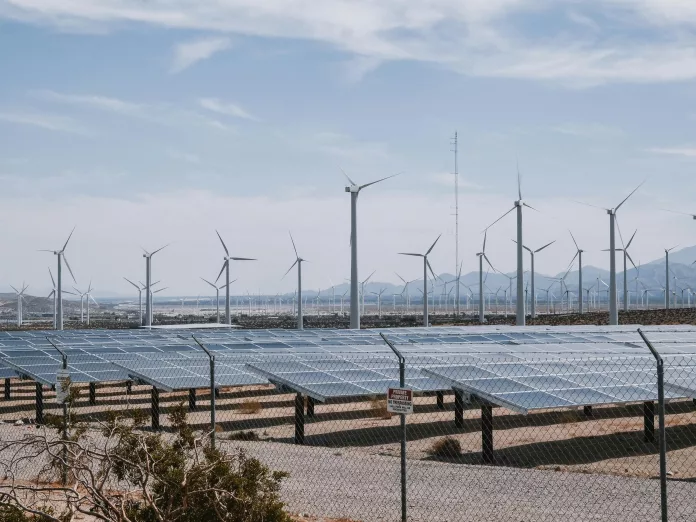The renewable energy sector in the United States is experiencing an unprecedented wave of growth, with solar and wind energy at the forefront, as indicated in the Short-Term Energy Outlook published by the EIA.
Solar Energy Soars High
With an influx of new solar installations anticipated in 2024, the solar power generation in the US is expected to see a significant climb. Projections by the EIA suggest a substantial 75% increase, soaring from 163 billion kilowatt-hours (kWh) in 2023 to 286 billion kWh by 2025. These figures underscore solar energy’s rapidly expanding role in the US power generation landscape.
Wind Energy Gains Momentum
Similarly, wind energy is not far behind, with expected growth of 11% within the same timeframe. It’s projected to increase its production from 430 billion kWh in 2023 to 476 billion kWh by 2025, solidifying its position in the renewable energy mix.
Renewable Energy Outpacing Traditional Sources
In a historical context, renewable energy sources, including wind, solar, hydroelectricity, biomass, and geothermal, contributed to 22% of the total power generation in the US during 2023, which amounted to 874 billion kWh. This contribution has marked a significant milestone by surpassing nuclear power generation in 2021 and coal in 2022 for the first time annually.
Developers of wind and solar projects typically aim to complete their projects by the year’s end, impacting the subsequent year’s generation growth. This trend is important to consider when looking at year-over-year changes in renewable energy deployment.
The Solar Surge Driven by Policy Support
The remarkable growth in solar energy can be attributed to several factors, one of which is the enlarged capacity brought about by numerous planned projects. These project additions mean the electric power sector is expected to expand its solar capacity by 38%, going from 95 gigawatts (GW) at the close of 2023 to an estimated 131 GW by the end of 2024. This surge is influenced significantly by attractive tax credits made available through the Inflation Reduction Act.
Wind capacity, albeit growing, is forecasted to experience a steadier increase. The EIA’s estimates show a leveling-off, with wind capacity rising marginally from 149 GW at the end of 2023 to 156 GW by the end of the following year.
Contrasts within the Energy Sector
While renewable resources secure their dominance, coal-generated power is poised for an 18% decrease from 665 billion kWh in 2023 to 548 billion kWh by 2025. In juxtaposition, natural gas retains its position as the preeminent source of electricity in the US, with projected annual generation remaining stable around 1,700 billion kWh for 2024 and 2025, mirroring 2023 levels. Nuclear generation also displays consistency, slightly ticking up from 776 billion kWh in 2023 to 797 billion kWh in 2025.
In summary, the EIA’s projections highlight a dynamic shift towards renewable energy in the United States, with solar and wind energy making historic strides as the country moves toward a cleaner, more sustainable power generation mix.

























